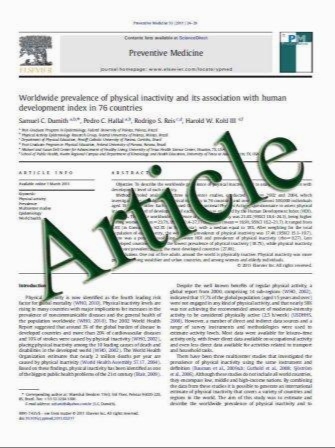Associations of total osteocalcin with all-cause and cardiovascular mortality in older men: the Health In Men Study
- نوع فایل : کتاب
- زبان : انگلیسی
- مؤلف : B. B. Yeap & S.A. P. Chubb & L. Flicker & K. A. McCaul & P. R. Ebeling & G. J. Hankey & J. P. Beilby & P. E. Norman
- چاپ و سال / کشور: 2011
Description
Summary In older men, both lower and higher total osteocalcin levels predict increased all-cause mortality, with comparable associations for cardiovascular and noncardiovascular deaths. Differences in osteocalcin levels might influence glucose metabolism and thereby cardiovascular risk, or reflect changes in bone turnover thus representing a marker for poorer health outcomes. Introduction Reduced levels of total osteocalcin (TOC) are associated with adiposity, insulin resistance and type 2 diabetes, implying this bone-derived peptide might modulate cardiovascular risk. However, there are few longitudinal data relating TOC levels to survival. We examined associations of TOC level with all-cause and cardiovascular mortality in older men. Methods We conducted a prospective cohort study of community-dwelling men aged 70–89 years. Aliquots of plasma collected at baseline (2001–2004) were assayed for TOC. Incidence and causes of death to 31 December 2008 were ascertained using data linkage. Cox regression analyses were performed with adjustment for conventional cardiovascular risk factors. Results From 3,542 men followed for median 5.2 years there were 572 deaths (16.1%). Mortality was lowest in men with TOC levels in the second quintile (12.6%). In multivariate analyses, men with TOC in the lowest and highest quintiles of values had increased all-cause mortality (Q1 vs Q2: hazard ratio [HR], 1.36; 95% confidence interval 1.02–1.80 and Q5 vs Q2: HR, 1.53, 95% CI 1.18–1.98). Men with low TOC levels had similar HR for cardiovascular and non-cardiovascular deaths (Q1 vs Q2: HR, 1.35 and 1.30 respectively). Higher TOC levels predicted cardiovascular disease (CVD)-related mortality (Q5 vs Q2, HR, 1.69, 95% CI 1.09–2.64). Conclusions TOC predicts all-cause and CVD-related mortality in community-dwelling older men. However, the relationship is U shaped with men at both ends of the distribution at increased risk. Further investigation is required to clarify whether the underlying mechanisms involve altered bone turnover or relate specifically to the biological activity of osteocalcin.
Osteoporos Int DOI 10.1007/s00198-011-1586-1 Received: 9 November 2010 / Accepted: 21 January 2011


